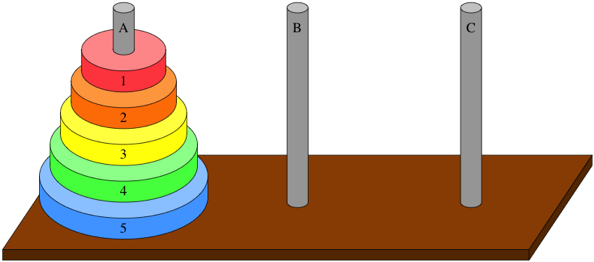


When the turn is to move the non-smallest piece, there is only one legal move.

For example, if you started with three pieces, you would move the smallest piece to the opposite end, then continue in the left direction after that. If there is no tower position in the chosen direction, move the piece to the opposite end, but then continue to move in the correct direction. When moving the smallest piece, always move it to the next position in the same direction (to the right if the starting number of pieces is even, to the left if the starting number of pieces is odd). Iterative solution Īnimation of an iterative algorithm solving 6-disk problemĪ simple solution for the toy puzzle is to alternate moves between the smallest piece and a non-smallest piece. This is precisely the n th Mersenne number without primality requirements. The minimal number of moves required to solve a Tower of Hanoi puzzle is 2 n − 1, where n is the number of disks. The puzzle can be played with any number of disks, although many toy versions have around 7 to 9 of them. In some versions, other elements are introduced, such as the fact that the tower was created at the beginning of the world, or that the priests or monks may make only one move per day. The temple or monastery may be in various locales including Hanoi, and may be associated with any religion. For instance, in some tellings, the temple is a monastery, and the priests are monks. There are many variations on this legend. If the legend were true, and if the priests were able to move disks at a rate of one per second, using the smallest number of moves, it would take them 2 64 − 1 seconds or roughly 585 billion years to finish, which is about 42 times the current age of the universe. According to the legend, when the last move of the puzzle is completed, the world will end.

The puzzle is therefore also known as the Tower of Brahma. Acting out the command of an ancient prophecy, Brahmin priests have been moving these disks in accordance with the immutable rules of Brahma since that time. Numerous myths regarding the ancient and mystical nature of the puzzle popped up almost immediately, including one about an Indian temple in Kashi Vishwanath containing a large room with three time-worn posts in it, surrounded by 64 golden disks. The puzzle was introduced to the West by the French mathematician Édouard Lucas in 1883.


 0 kommentar(er)
0 kommentar(er)
